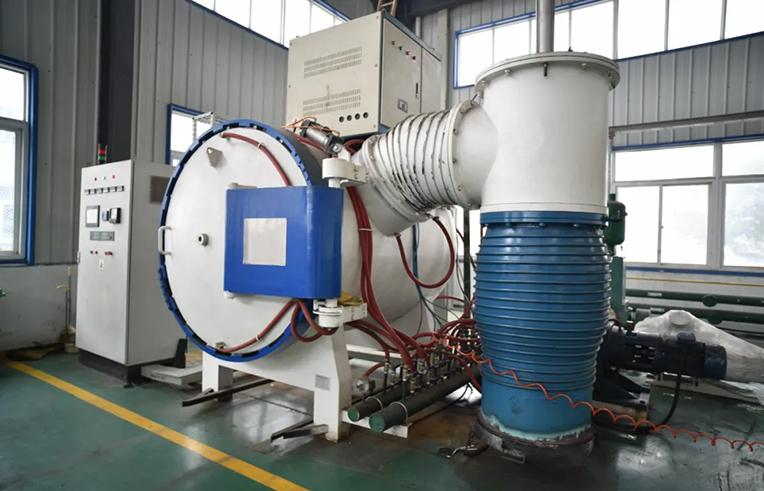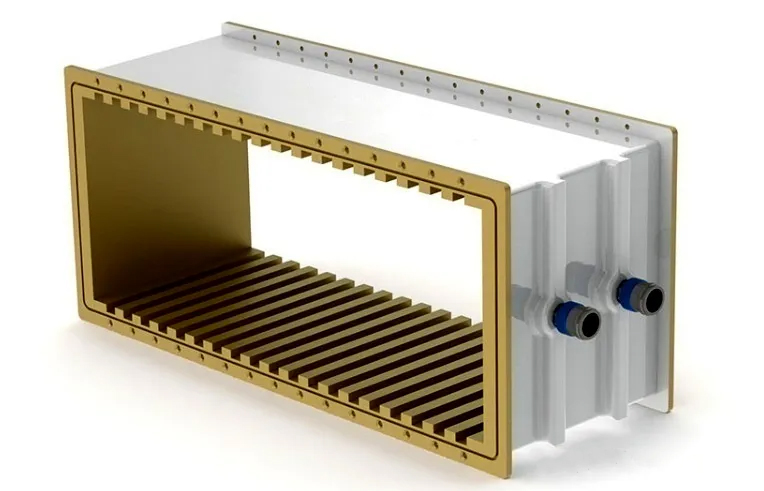The manufacturing process for cold plates, which work closely with manifold, is critical to system performance. Vacuum brazing is an advanced cold plate manufacturing technology that is particularly strong in aluminum liquid cold plate applications. The process ensures excellent thermal conductivity and structural strength of the cold plate by brazing the aluminum to the internal microchannel structure in a vacuum environment, avoids oxidation problems associated with traditional brazing, and results in a flat cold plate surface and lower contact thermal resistance, thus improving heat transfer efficiency to the chip. In high-power devices (such as NVIDIA GB200 GPUs), the vacuum brazed aluminum liquid cold plate, in conjunction with manifold, can effectively cope with thermal loads in the hundreds of watts range, ensuring the high efficiency and reliability of the heat dissipation system. In addition, the microchannel design optimizes coolant flow and further reduces thermal resistance.
The Goal of Vacuum Brazing Process Optimization for Aluminum Liquid Cold Plate
Vacuum brazing is a high-precision joining technology that is widely used in the manufacture of high-performance components such as liquid cooling plates in data centers. The process is characterized by the use of brazing material in a vacuum environment to achieve a strong connection of the base material, avoid oxidation and ensure a high quality joint. However, vacuum brazing involves a number of process parameters, and deviations in any part of the process can lead to defective joints or degraded performance. Therefore, optimization of the vacuum brazing process is essential to improve product quality and productivity. The main objectives of vacuum brazing process optimization include:
Improve joint quality: Ensure that joints are free of porosity and cracks, and that their strength and high-temperature resistance meet design requirements.
Reducing material damage: avoiding negative effects on the properties of the base material during the brazing process, such as coarse grain size or generation of harmful phases.
Enhance production efficiency: shorten the process cycle, reduce energy consumption and equipment operating costs.
Enhance process stability: reduce the impact of parameter fluctuations on the results and improve batch consistency.
Key Parameters and Optimization Methods of Vacuum Brazing Process for Aluminum Liquid Cold Plate
Vacuum Degree
The precise control of vacuum degree is the key to the success of vacuum brazing, which directly affects the welding quality and cold plate performance. If the vacuum is insufficient, the residual oxygen may react with the aluminum material, forming an oxide layer, reducing the wettability and joint strength of the brazing material, and even leading to porosity defects. On the contrary, too high a vacuum requirement can further reduce oxidation, but will significantly increase equipment costs and process complexity, affecting production efficiency.
Optimization strategy: control the aluminum liquid cold plate brazing vacuum at 10-⁴ to 10-⁶ Pa, to ensure that the aluminum of the cold plate will not form an oxidized layer, to increase the heat transfer efficiency of the aluminum liquid cold plate, and to maintain high productivity.Lori's vacuum brazing furnaces are usually equipped with high-precision vacuum pumps and testing systems to Lori's vacuum brazing furnaces are typically equipped with high-precision vacuum pumps and inspection systems to ensure stable vacuum parameters for high quality aluminum liquid cold plate manufacturing.
Heating Rates
The heating phase of vacuum brazing is a critical step in ensuring the quality of aluminum liquid cold plate. Too fast heating may lead to uneven distribution of brazing material, affecting the quality of welding; too slow heating may prolong the acoustic field cycle, reducing production efficiency.
Optimization strategy: The heating rate of aluminum liquid cold plate should be controlled between 1-3℃/min to avoid thermal stress or deformation of aluminum due to rapid heating. By precisely controlling the temperature gradient, vacuum brazing ensures a homogeneous bonding of the aluminum to the microchannel structure when the melting point of the brazing material is reached (approx.580-620℃, depending on the composition of the brazing material).

Holding Time
The holding phase is the core link of vacuum brazing, which directly affects the welding strength and cold plate performance. The length of holding time in vacuum brazing of aluminum liquid cold plate depends on the size of the cold plate and the complexity of the design; too short a time may lead to incomplete welding; too long a time may trigger coarse grain size of the aluminum material and reduce the welding strength.
Optimization strategy: After reaching the melting point of the brazing material, the aluminum liquid cold plate needs to be held at a constant temperature (usually between 590-610℃) for 10-30 minutes to allow the brazing material to fully melt and penetrate into the aluminum joints. The optimized holding process ensures that the micro-channels inside the cold plate are airtight and thermally conductive, providing solid support for efficient cooling of the manifold.
Cooling Speed
After vacuum brazing, control of the cooling rate is critical to the flatness and performance of the aluminum liquid cold plate. Cooling too fast may lead to thermal stress concentration in the cold plate and aluminum deformation; cooling too slowly may trigger brazing material reflux or excessive grain growth, affecting structural uniformity.
Optimization strategy: adopt staged cooling method, during the cooling process, through the vacuum furnace into the high-purity nitrogen (purity ≥ 99.999%, flow rate of 5-20 L/min) for the nitrogen cooling, in order to accelerate the heat dissipation at the same time to maintain the controllability of the cooling rate, so that the aluminum liquid cold plate from the holding temperature to room temperature cooling rate control at 2-5℃/min.
Fixture Design
Combining fixtures to fix the cold plate can effectively limit the deformation caused by thermal expansion and contraction.
Optimization strategy: aluminum liquid cold plate fixture needs to accurately match the geometry of the cold plate and apply uniform pressure during the cooling process to ensure that the micro-channel structure is not distorted, to achieve a high degree of flatness, which can significantly improve the contact rate between the cold plate and the chip, and optimize the heat dissipation performance.
The aluminum liquid cold plate vacuum brazing process ensures the flatness and microchannel structure of the cold plate through the control of parameters such as the heating rates, holding time, vacuum degree, and cooling speed, and works in concert with other components such as air tubes, pumps, and heat exchangers to provide optimal heat dissipation in high-power devices, such as AI servers.










